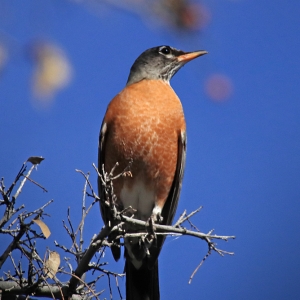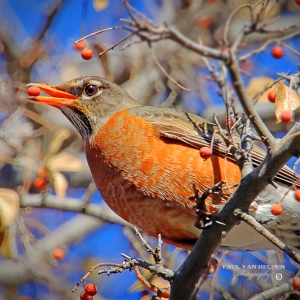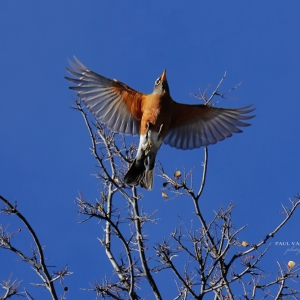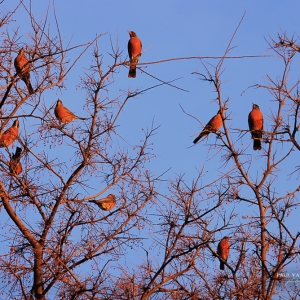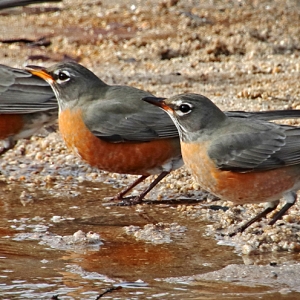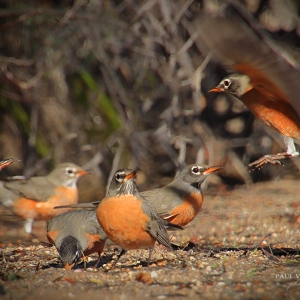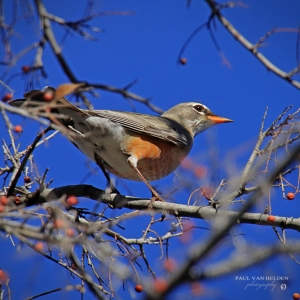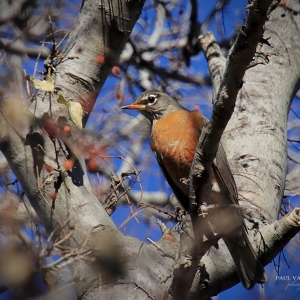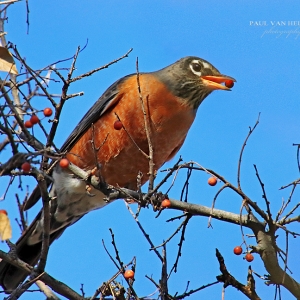In New England, where I grew up, seeing the first Robin was considered a harbinger to spring, a most welcome site that brought hope and optimism, after a long cold winter. But, ever wonder where robins actually spend their winters? After doing some research, I discovered that American Robins do not always migrate south, as most of us thought.
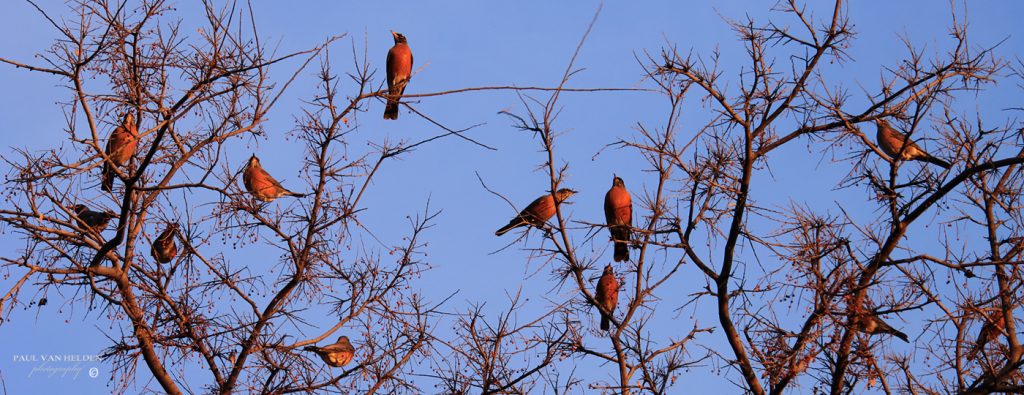
To migrate or not to migrate is the question. Migrating south for the winter is actually an optional decision, that is not as much weather related as it food related. If they can find lasting reliable food sources, robins can and will sometimes ride out the winter right where they are. That said, I don’t recall ever seeing a Robin in the middle of winter, when I was living in Massachusetts.
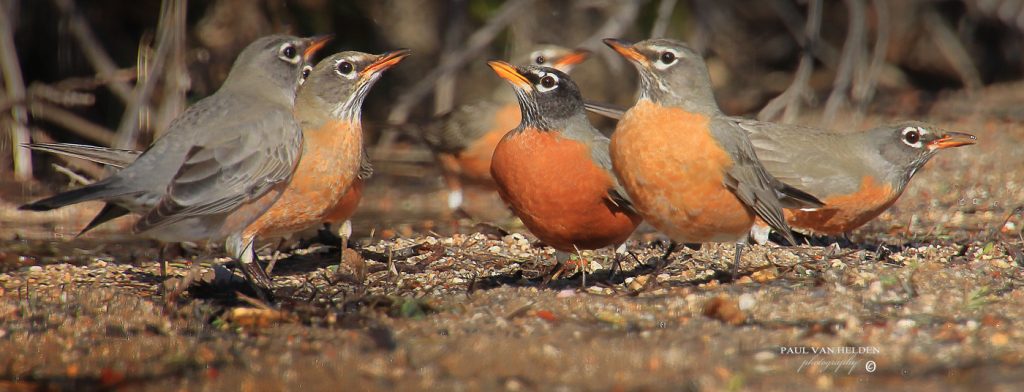
So, if they’re not braving the winter up north, where in the south do they actually go? This became an even bigger question for me after I moved to Tucson. Because, I would think if you’re a migrating Robin, southeast Arizona would be one of the places you’d consider seeking refuge. Yet, I spent years here without seeing one in the winter or any time of year for that matter.
That all finally changed in a big way last December, when it seemed every Robin in North America descended upon Catalina State Park. First I saw one, then another appeared and they just kept multiplying. After a few weeks, there were hundreds if not thousands of them.
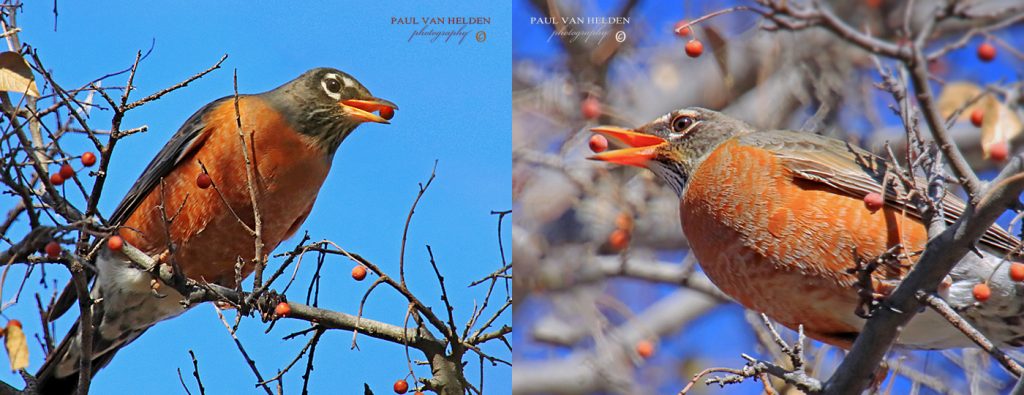
What brought them here all of sudden, soon became obvious. A very generous monsoon season produced an abundance of delicious hackberries. These sweet tasting morsels are a big draw for a variety of birds, though Robins dominated the landscape.
How do they do it? How does the word get communicated to other Robins? Does a bulletin come across their Facebook feeds? Do they send out tweets ? “Hey! Let’s all get together at Catalina State Park! There’s enough sweet berries there to feed us all, well into the New Year!”
What does December of 2023 have in store for migrating robins? So much is contingent upon the amount of precipitation the area received last summer. During the summer of 2022, the park had to be a closed a number of times due to flooding. That didn’t happen at all this year. Despite what was recorded at Tucson International Airport, the official record keeping location for the Tucson Metro, rainfall totals from this past summer’s monsoon season were well below normal for Catalina State Park and the surrounding area. This doesn’t bode well for the berries.
There will undoubtedly be some berries, but will it be enough to entice another year end celebration at Catalina State Park, for the robins? I doubt it. They’ll probably send a few scouts to acquire some advanced itel. Once word of the poor berry production gets back to their extended families and friends, they’re likely to book their year-end party somewhere else. What happened last December was part of the magic of Catalina State Park. It was blessing to be able witness it.
Thanks for reading! If you like the content of this post, you may also want to visit my gallery page for Birds of Southern Arizona and, while you’re at it, check out my gallery for Scenic Photos of Catalina State Park too.


